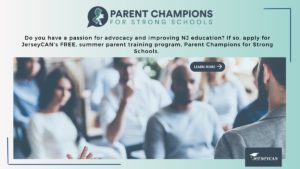We’re about 5 weeks into our coronavirus lock-down in New Jersey, about a month since much of America has embarked on a national experiment of remote instruction that likely will continue for the duration of the school year.
In New Jersey this means 555 school districts are independently creating remote learning plans, coming up with laptop distribution strategies, figuring out meal delivery for low-income kids, and setting expectations for students. On the face of it, this seems terribly inefficient: Remote instruction is scalable so why are we wasting teacher and administrator time when collaboration would be such an asset during this crisis?
Here’s the dirty little secret: We can’t scale up because our districts are islands unto themselves, sharing little in the way of academic expectations and manifesting chasmic opportunity gaps. That’s another way of saying that in New Jersey (and in other states too) you enroll your kid in a great school district if you have enough money to buy into that housing market, not that different than paying tuition to a tony private school.
You get what you pay for. The New Jersey public schools are a split-screen system. Inequity is us.
The Abbott decisions, now 30 years old, were supposed to fix these inequities by giving what were once our 31 poorest districts (called “Abbott districts” or “SDA districts”) lots of money to compensate for lower tax bases. But the Abbott remedy didn’t work (just look at Asbury Park where total annual cost per pupil is over $40,000) and, during this pandemic, the failure of the Abbott premise blazes into stark relief.
Let’s go back to the split screen I covered four weeks ago by looking at the quality of educational programming offered to students who attend Princeton Regional Public Schools in comparison to students who attend Trenton Public Schools, twelve miles south on Route 206.
Princeton Regional Public School District is not an Abbott district; the average house costs $656,000 and the total annual cost per pupil is $26,863, 18% coming from the state. Trenton Public School District is an Abbott district. The average house costs $69,805 and the total annual cost per pupil is $23,009, 90% coming from the state. Now that districts have a solid month under their belts of online instruction, let’s see if Trenton has made up some ground towards offering equal opportunities to its 13,000 students.
The district website says that Trenton is on “spring break,” although an update from the superintendent says that students should “continue to take advantage of all of our online offerings,” with teachers “unavailable during this time.” There is a page for internet access, which leads you to an ad for a company called “Internet Essentials” offering free internet for two months and then a low rate of $9.95 a month.
Trenton offers two learning options. One is paper packets of worksheets. When I looked at Trenton’s learning plans last month there was this on the website: “The district has exhausted all of the printed packets; the district is closed and our vendors have limited resources in printing out additional packets. Therefore, no additional copies are available until further notice.” Now, the page says “Printable Packets,” which I guess means parents are supposed to print the material out themselves, assuming they have a printer. Strangely, all the packets are for students with disabilities and English Language Learners. Does that mean that home instruction for these students is all hard-copy? I don’t see any paper packets for fluent English speakers or non-disabled students.
Another link on the district website is “Contingency Plans for K-5.” Example: For reading on Day 15 third-graders are supposed to go online and listen to a story and answer a question. For math they go to this site and do a module, for gym they do “flexibility and yoga exercises,” and for music they do an activity called “Trace the Spaces.” That’s it for Day 15. There must be something for students grades 6-12 but I can’t find it. I may have missed it. If someone finds it, let me know. (There’s nothing on the high school or middle school pages.)
Now let’s shift to the other half of our split screen and look at Princeton Public Schools, also finishing up “spring break.” The superintendent sends out weekly missives; the one posted Wednesday begins, “As I write this, two beautiful red cardinals are busily (and noisily) engaged in building a nest in the tree outside our kitchen window. Nature, undeterred by the coronavirus, continues to provide for its children. So do we.”
What does bucolic Princeton provide?
Not just paper packets. From the Pandemic Response Team:
The District’s Mobile Access program (MAP) currently supplies eligible students in grades 3 – 12 with computer devices and Hot Spots. This provides families and students with an additional means of receiving communication from the school district and allows students to access and complete assignments online. In the event of an extended closing beyond two weeks, we will be providing laptops or iPads to our eligible K-2 students; teachers of those grades will add technology enhancements to their work packets at that time.
All students have moved to fully virtual learning. Teachers do live lessons each day for each subject and videos of the lessons are available other times during the day. This page explains that teachers are focusing on “core skills, not simply content coverage…to move students along with curriculum goals, that all will exercise “flexibility along with compassion,” and “at times, a teacher may want to also meet with small groups of students. In that case, if possible, it would be helpful if you can arrange for your child to have a computer device available to them at the scheduled time.”
Imagine if Trenton students were able to share Princeton’s remote instruction. All it would take is digital access, right? When will there be a better opportunity to offer equal opportunity? Why can’t Trenton students click on a live lesson from a Princeton schoolteacher?
You know the reasons: Addiction to local control. Princeton taxpayers feeling proprietary over their investments in their home district. Union rules.
And there’s this: Third-grade in Trenton is not third-grade in Princeton. Algebra 1 in Trenton is not Algebra 1 in Princeton. A high school diploma in Trenton signifies something different than a high school diploma in Princeton. Another dirty secret of New Jersey’s split-screen school system. TNTP calls it “The Opportunity Myth” where “adults make daily choices that perpetuate a cycle of inequity and mediocrity in our schools. Consciously or not, we choose to let many students do work that’s far below their grade level. We choose to leave teachers without the skills and support they need to give all their students access to high-quality academic experiences. We choose to act on assumptions about what students want and need out of school, without really listening to them and their families. We choose, in essence, which students are more deserving of reaching their goals.”
The story of Princeton and Trenton is the Opportunity Myth writ small. The story of New Jersey’s state school system is the Opportunity Myth writ large.
The impact of these educational inequities will be huge. NWEA, the nonprofit assessment and research organization, just issued a report that makes predictions about learning loss during these school closures. CEO Chris Minnich “predicts dramatic losses in learning after what could well be up to six months of school closures. In some grades, students may end up an entire year behind where they would have been academically, absent COVID-19.”
Those learning losses will be much more dramatic in Trenton than in wealthy suburban districts, leaving inner-city students that much more behind. I’m tired of mythology. Aren’t you?






14 Comments